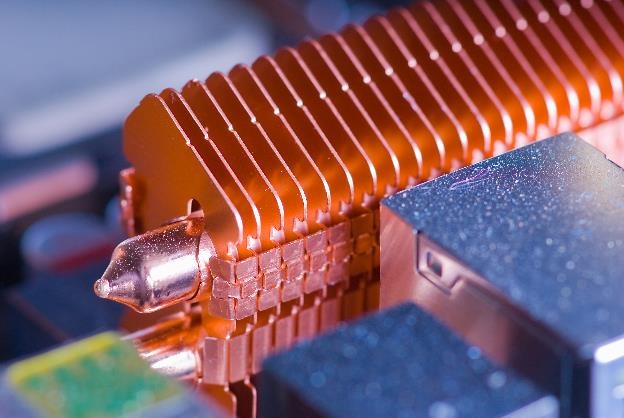As electronic devices grow more powerful, they continue to require more advanced thermal management techniques.
Devices that produce an excess of thermal heat require thermal management as a result of their high resistance or high processing loads. You'll commonly find advanced thermal management in devices such as:
- Modern CPUs
- GPUs/graphics cards
- TPUs
- Other specialized processing devices
These devices create abundant amounts of heat as they operate. Advanced thermal management items, such as heat pipes, are becoming commonplace in high processing applications such as artificial intelligence, autonomous vehicles, and high-end personal computers.
What is Heat Pipe Technology?
Heat pipes are an advanced thermal management technique that uses refrigeration cycle characteristics in a contained environment to help move heat away from the heat source. We'll explore the basics of heat pipe fundamentals, heat pipe construction, and common heat pipe uses.
As the name suggests, a heat pipe is a―usually cylindrical―component that transfers heat away from a system. The main operating goals of a heat pipe are to:
1. Boil the liquid
2. Transport the gas
3. Condense the gas back to liquid
4. Transfer the liquid to the heat source
5. Repeat
Given the two different material phase changes of the working liquid, the heat pipe is exceptionally efficient at absorbing, transferring, and expelling large amounts of energy. Heat pipes commonly use water or alcohol as the working liquid.
Heat Pipe System Cycles
There are four stages in a heat pipe "cycle."
1. Heat absorption: When heat is applied to the heat pipe, the working fluid evaporates. This phase change is extremely efficient at absorbing energy quickly and utilizes the working fluid's natural properties. Depending on the pressure at which the system is set, the liquid will boil at a specific temperature. Lower pressures create lower temperature boiling points, while pressurized heat pipes create high-temperature boiling points.
2. Heat movement: Once the liquid turns to vapor, diffusion quickly moves the gaseous fluid to an area of lower density. This movement is quick and occurs naturally without any added input.
3. Heat release: When the high-temperature vapor reaches the end of the heat pipe, a cooling medium such as a heat sink, fan, or external cooling fluid moves the energy away from the pipes. This released energy condenses the vapor back into a liquid phase which, again, is an extremely effective way of transferring energy via the working fluid.
4. Cooling movement: The condensed liquid―which we could consider the cooling medium―will be absorbed by the wicking material. Via either gravity, capillary action, or centrifugal force, the liquid will return to the heating portion of the heat pipe, thus completing the cycle.
Heat Pipe Manufacturing Process
The basic operating components in heat pipe design are a pressure regulated and sealed shell, which contains a perimeter of wicking material, an open space, and a liquid.
The heat pipe shell is constructed of a material with high thermal conductivity, such as copper. When the system applies heat to the heat pipe's outer shell, the heat transfers to the wicking material. The wicking material has a high surface area and is also thermally conductive, which allows it to efficiently disburse the thermal energy across the liquid medium. This process creates an effective boiling environment. If the wicking material is only on one end of the heat pipe, that end alone will be the heating end. You can see this design option at use in thermal diodes, also called thermosyphons.

Heat pipe technology continually pushes the limits of the manufacturing processes. Modern heat pipes may not even resemble a 'pipe' shape and instead may be flat channels―as shown in the image above― that move heat to large surface areas for forced or passive cooling. These heat pipe configurations may also be called vapor chambers. The vapor chamber absorbs a large amount of this energy and transfers it to the heat sinks at the top of the assembly, all of which creates a much larger surface area to transfer heat away from the system.
Heat Pipes for Electronics Cooling Applications
You can find heat pipes in high-end personal computers, but they've also been at work since the 1990s in high-processing applications like desktop artificial intelligence supercomputers. Heat pipe cooling assemblies are most commonly associated with custom gaming computer consoles, as their CPUs and GPUs push the bounds of modern silicon performance. These cooling devices are almost always used in conjunction with heat sinks and forced air systems like fans.
Another up-and-coming industry that requires high processing power―and subsequent heat generation―is artificial intelligence and neural network training. These applications often require custom computing builds and custom thermal management solutions that utilize heat-pipe-powered technology. Heat pipes are also used in:
- LED cooling
- Thermal-solar applications
- Heat-protection applications
- Ventilation heat recovery
- Spacecraft heating
- Energy harvesting
To shop heat pipes for your design, check out our thermal management accessories.

